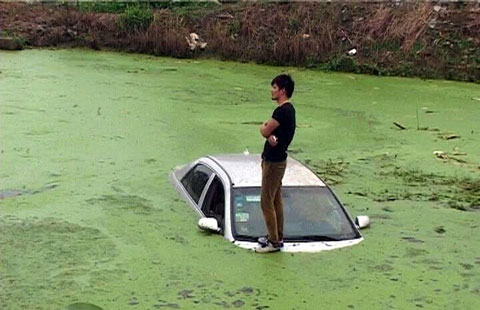
California is mired in its most severe drought in living memory, going on more than three years of below-average rainfall, and everyone from farmers, to exporters and even civilians is feeling the pinch.
Joel Nelsen, president of California Citrus Mutual, a nonprofit citrus growers association based in Exeter, California, told The Packer — an online fruit and produce industry newsmagazine — that exports to China and other markets in 2014-15 will be "disproportionately affected by lower California production caused by drought problems".
China is now the biggest global destination for US food and agricultural products, according to the US Department of Agriculture (USDA). Consumers in China account for nearly 20 percent of all US farm exports, a total that climbed to $26.7 billion in 2013.
California is the world's No 1 producer in tree nuts, and the state provides at least half the country's fresh fruits and vegetables, based on USDA data.
The state's exports to China totaled $15.7 billion in 2013, making China the third largest market behind Mexico and Canada, respectively.
Ken Gilliland, the WGA's director of international trade, said: "China has been an expanding market on the export side for a lot of our growers. They see China as a large market and growers are certainly going to try to protect their market share."
But Gilliland said the No 1 priority for growers is to take care of their regular customer base.
"Most of the growers do both domestic and international exports, so it's kind of hard to say what market might be sacrificed," Gilliland said. "It's just too early to tell what direct impact these developments might have on product moving to China."
Agriculture officials are coping with widespread issues, including: historically low reservoir levels, a pressing need for alternative water transporting mechanisms and a sharp increase in the percentage of fallowed farmland, said Wendy Fink-Weber, senior director of communications for the Western Growers Association (WGA).
"California is America's No 1 agricultural producing state, and most of the agriculture in California is irrigated," Fink-Weber said. "But we haven't had too much precipitation in the last three years. We have a unique microclimate, but it just needs water."
California's 154 state reservoirs are near 60 percent of the historical average, Bloomberg News said in a July 31 report. And more than half the state (58 percent) is in a period of "exceptional drought", according to the latest update from the US Drought Monitor.
But data complied by Bloomberg shows that this dry spell is not yet the worst drought California has ever seen.
In a two-year period spanning 1976-1977, California's water storage level fell to just 41 percent of the state's average.
Brian A Fuchs, a climatologist with the National Drought Mitigation Center (NDMC), said: "In California specifically, a lot of the water delivery is surface water, which means that the water is typically harvested from mountain runoff and put into reservoirs."
"But when you start talking about three consecutive years of decreased snowpack and reduced runoff and withdrawals from the reservoir system being greater than the inputs, you start seeing a decline," Fuchs said.
Fuchs said some farmers are coping with the conditions by "concentrating their efforts into a smaller portion of their land".
"These growers are definitely still producing," he said. "But you're going to see some declines that are going to vary from crop to crop and there's going to be some price adjustments."
The US Drought Monitor, established in 1999, is a weekly map of drought conditions throughout the country produced by the NDMC, in conjunction with the National Oceanic and Atmospheric Administration (NOAA) and the US Department of Agriculture (USDA).
But he also said some extra time would give agricultural officials a chance to better gauge the drought's impact.
Fink-Weber, with the WGA, said: "Growers will get through this season all right, but if they don't get water they will be damaged for a long time. And that has an impact on the local communities."








